Unlocking the Enigma of Brain Connectivity
Unlocking the Enigma of Brain Connectivity
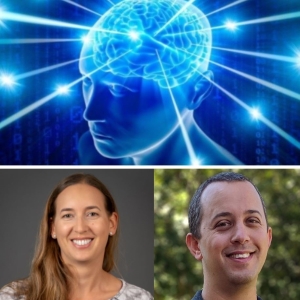
The UNC School of Data Science and Society has unveiled the recipients of their inaugural round of seed grants. These grants are designed to ignite groundbreaking collaborations at the crossroads of interdisciplinary research in data science. Among the pioneers chosen to embark on this journey is the team composed of Professors Caroline Moosmueller, Shahar Kovalsky, and Martin Styner, a dynamic blend of expertise from the Department of Mathematics, Department of Computer Science, and Department of Psychiatry.
This trio of innovative minds plan to develop intricate mathematical models and cutting-edge algorithms, poised to unlock the enigmatic secrets of the human brain. Their focus is the spatial and temporal dynamics of functional brain connectivity, a pivotal puzzle piece in understanding the intricacies of cognitive control and providing a beacon of hope in the fight against neurodegenerative conditions such as Alzheimer’s disease.
The full announcement from the School of Data Science and Society can be found here. Congratulations Caroline and Shahar!
Newhall and Team Awarded $2M NSF Grant to Revolutionize Materials
Newhall and Team Awarded $2M NSF Grant to Revolutionize Materials
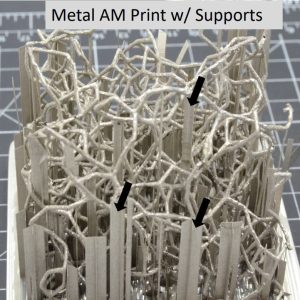
Professor Katie Newhall is part of a team of five leading researchers spanning four prestigious universities that have just secured an impressive $2M NSF DMREF grant for their groundbreaking project: “Unleashing the Future with Hyperuniform Materials.” Their mission is to engineer a brand-new class of ultralight materials that will redefine the boundaries of what’s possible in terms of mechanical strength and transport properties, including thermal, acoustic, and electrical performance.
Newhall’s role involves developing innovative modeling techniques like network analysis and stochastic spatial-averaging to optimize designs efficiently while ensuring manufacturability.
Their grant is not just about research; it’s about inspiring the next generation of scientific leaders. With a focus on undergraduate and graduate education, they’re igniting a passion for multidisciplinary engineering, materials science, mathematics, and physics. The team is also on a mission to share their excitement with the world through publications, outreach, and internships, creating a wave of enthusiasm for materials research. With a strong commitment to entrepreneurship, they’re also empowering trainees to take their innovations to the market and change the world.
And all of this is made possible thanks to the generous support of NSF’s CMMI, DMS, and DMR divisions. Congratulations Katie!
Canzani Beaming Over New Book
Canzani Beaming Over New Book
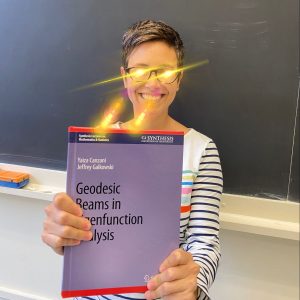
Professor Yaiza Canzani and her co-author Jeff Galkowski just dropped their new book: Geodesic beams in eigenfunction analysis. Yaiza and Jeff have pioneered methods for studying Laplace eigenfunction concentration by utilizing an intrinsic link between the behavior of eigenfunctions and geodesic flow, a deep reflection of the correspondence between quantum and classical dynamics. From the author’s description: “Geodesic beams have proven to be a valuable tool in the study of Laplace eigenfunctions, but their treatment is currently spread through a variety of rather technical papers. The authors present a treatment of these tools that is accessible to a wider audience of mathematicians. Readers will gain an introduction to geodesic beams and the modern theory of Laplace eigenfunctions, which will enable them to understand the cutting edge aspects of this theory.”
Congratulations Yaiza!
Cherednik Debuts New Book
Cherednik Debuts New Book
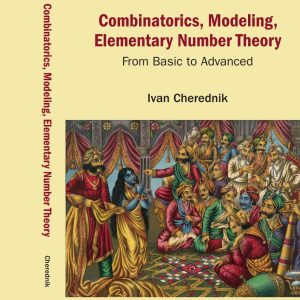
Professor Ivan Cherednik dropped a new textbook tackling diverse topics in combinatorics, modeling, and number theory but requiring little background from the reader. From the author’s description: “This book is mostly based on the author’s 25 years of teaching combinatorics to two distinct sets of students: first-year students and seniors from all backgrounds. The prerequisites are kept to a minimum; essentially, only high school algebra is required. The design is to go quickly from zero knowledge to advanced themes and various applications with a lot of topics intended for additional reading and research projects. It contains an all-inclusive collection of 135 problems and 275 exercises with four difficulty levels: solutions, hints and answers are provided.”
Congratulations Ivan!
2023 University Research Week Events
2023 University Research Week Events
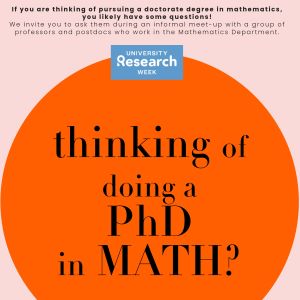
During University Research Week, the Department of Mathematics will be hosting two engaging events tailored for students passionate about mathematics.
Event 1:
- Date: October 26
- Time: 2-3 PM
- Location: PH 365
Join us for an informal meet-up where you can delve into the exciting world of research and the pursuit of advanced degrees in mathematics. Our discussion panel features experienced professors and postdocs associated with the NSF RTG project titled “Partial Differential Equations on Manifolds.” Get insights, ask questions, and explore the possibilities in this dynamic field! The official University Research Week link for this event can be found here.
Event 2:
- Date: October 27
- Physical Mathematics Lab (CH 311): 10-11 AM
- Joint Fluids Lab (CH B02): 11 AM-12 PM
Be a part of live demonstrations at the Physical Mathematics Lab from 10-11 AM, followed by captivating experiments at the Joint Fluids Lab from 11 AM-12 PM. Witness mathematics come to life in these interactive sessions. The official University Research Week link for this event can be found here.
Congratulations Class of 2023!
Congratulations Class of 2023!
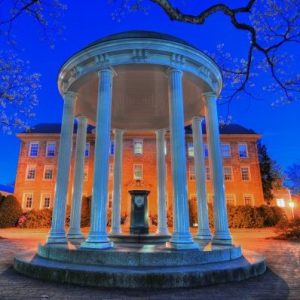
Commencement celebrating our graduating majors, Masters, and PhD students was held on May 13, 2023. In addition to degrees conferred, the following prizes were awarded:
- Archibald Henderson Mathematical Medal – Yizhou Gu and Connor Magoon,
- Alfred T. Brauer Prize – Anand Hande,
- J. Burton Linker Award – Laurie Short,
- Goodman – Petersen Teaching Award – Professors Linda Green and Shahar Kovalsky.
Also, speaking on behalf of the Class of 2023 was Hannah Cruz, who graduated with a B.S. in Mathematics and minors in Entrepreneurship and Applied Sciences and Engineering.
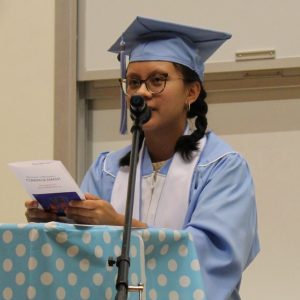
For more on Hannah, the awards, and the list of graduates, see the 2023 Commencement Program, and for pictures, visit the Commencement page. Congratulations everyone!
Linda Green and Shahar Kovalsky Earn 2023 Goodman-Petersen Award
Linda Green and Shahar Kovalsky Earn 2023 Goodman-Petersen Award
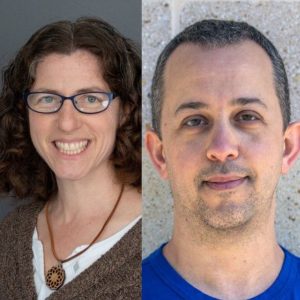
Professors Linda Green and Shahar Kovalsky are corecipients of the the 2023 Goodman-Petersen Award. The Goodman-Petersen Awards for Excellence in Undergraduate Education were established thanks to a donation from UNC Mathematics Alumni Jennifer Johnson and Janos Kollar, and they are given annually by the Department to faculty for excellence in the teaching of Mathematics in undergraduate education. The awards are intended to highlight the accomplishments of Mathematics Department instructors who have made a great contribution to undergraduate instruction over the last two years. The awards are named after two of our Emeritus Faculty members, Professors Sue Goodman and Karl Petersen, both of whom showed incredible devotion to undergraduate education throughout their careers. Congratulations Linda and Shahar!
To see past awardees, visit:
Photo Finish for the 2023 Henderson Medal
Photo Finish for the 2023 Henderson Medal
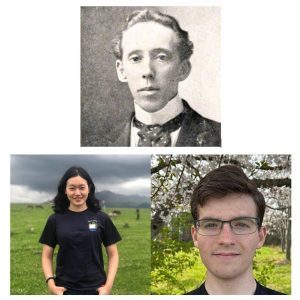
In the first time in 10 years, two undergraduate students, Yizhou (Josie) Gu and Connor Magoon, earned the 2023 Henderson Medal. The Archibald Henderson Mathematics Medal was established in 1931 and named after the late Archibald Henderson, a mathematician, teacher, literary critic, biographer, and historian. For fifty years Henderson was a member of the Department of Mathematics at Chapel Hill, first as student, then as full professor. This medal is awarded by the Department to undergraduate students for excellence in Mathematics: specifically in demonstrating a high degree of mathematical ability and the greatest promise of originality in the field. Congratulations Josie and Connor!
For more information on Archibald Henderson, the award, and its past recipients, visit:
Anand Hande Takes Home the 2023 Alfred T. Brauer Award
Anand Hande Takes Home the 2023 Alfred T. Brauer Award
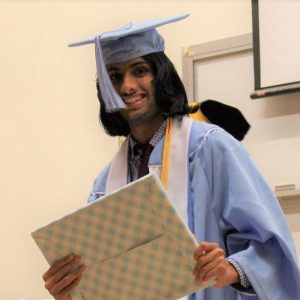
Anand Hande, class of 23′, earned the 2023 Alfred T. Brauer Award. Named for the late Professor Alfred T. Brauer, a distinguished member of the Mathematics faculty, this annual departmental award is given to the undergraduate who is judged by the Mathematics Department to have demonstrated the greatest ability and shown the greatest promise for achievement in the fields of algebra or number theory. Congratulations Anand!
For more information on Alfred T. Brauer, the award, and its past recipients, see:
Laurie Short Goes Above and Beyond for the 2023 Linker Award
Laurie Short Goes Above and Beyond for the 2023 Linker Award
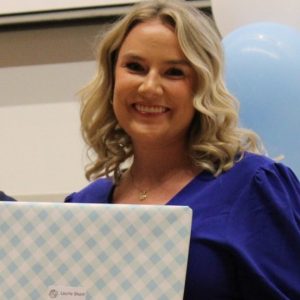
Graduate student Laurie Short has earned the 2023 Linker Award. The J. Burton Linker Fund, established by J. Burton Linker, Jr., ’44, of Chapel Hill, and Edward M. Linker of Martinsville, Va., in honor of UNC-CH Mathematics Professor J. Burton Linker, provides for this annual departmental award. The Linker Award is presented annually to a graduate teaching assistant who has shown the greatest effectiveness as a teacher of undergraduate mathematics courses. Congratulations Laurie!
For more information on J. Burton Linker, Jr., the Linker Award, and past recipients, see:
